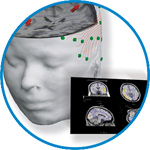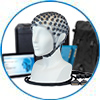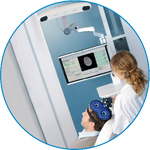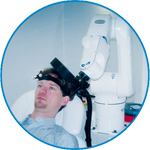- Home
- About ANT
-
Products

asa
asa is a highly flexible EEG/ERP and MEG analysis package with a variety of source reconstruction, signal analysis and MRI processing features.
.jpg)
eego mylab
The new frontier in multimodal brain research. With up to 16 kHz sampling rate, 256 EEG channels and unique software features, eego mylab gives you an unprecedented in-depth understanding of the human brain.

eego sports
eego sports offers complete freedom to collect high-density EEG data, bipolar EMG signals, and a variety of physiological sensor data, wherever and whenever required, with publish quality data in less than 15 minutes!

waveguard net
The waveguard net sets a new standard for research applications requiring high-density EEG data acquisition with quick preparation time, high flexibility, and subject comfort.

visor2
Our new and upgraded visor2 solutions integrate all the latest technologies for navigated rTMS, dual-coil navigation support, EEG-TMS recordings and pre-surgical evaluation for the highest quality in research and clinical procedures.

powerMAG ANT
The PowerMAG ANT 100 rTMS stimulator is designed for the specific needs of high-end TMS applications. Powerful high-frequency TMS as well as high precise single pulse and repetitive pulse protocols are combined in one single device.

xensor
xensor offers the solution for digitization of 3D electrode positions. xensor takes care of the whole procedure; it records, visualizes and stores positions acquired with a dedicated digitizer.

waveguard original
waveguard original is the cap solution for EEG measurements compatible with fMRI, MEG and TMS system. Use of active shielding guarantees performance in even the most demanding environments.

waveguard connect
waveguard connect EEG caps are a perfect match for hospitals and institutes aiming at reliable EEG, maximum uptime and great patient comfort! For optimal signal quality, the electrodes are made of pure, solid tin.

waveguard touch
waveguard touch is a dry electrode EEG cap. The unique Ag/AgCl coated soft polymer electrodes provide stable, research-grade EEG signals while maintaining subject comfort. The combination of these innovative dry electrodes and the industry-leading waveguard cap makes waveguard touch the best solution for dry EEG.

smartmove
smartmove allows planning of a complete TMS session ahead by defining stimulation sites based on anatomical MRI information and functional information like fMRI, PET or EEG/MEG.
Stay - References
- Support
- Events
- News
- Contact Us
You are here
Recovery of reward function in problematic substance users using a combination of robotics, electrophysiology, and TMS
Recovery of reward function in problematic substance users using a combination of robotics, electrophysiology, and TMS
Background
Theoretical and empirical work suggest that addictive drugs potentiate dopaminergic reinforcement learning signals and disrupt the reward function of its neural targets, including the anterior midcingulate cortex (aMCC) and the basal ganglia. Here, we aim to use prefrontal 10-Hz TMS to enhance aMCC reward activity and reward learning by the basal ganglia in problematic substance users.
Methods
22 problematic substance users were randomized into an Active and SHAM (coil flipped) TMS group. We recorded the reward positivity—an electrophysiological signal believed to index sensitivity of the aMCC to rewards—while participants engaged in 4 blocks (100 trials per block) of a reward-based choice task. A robotic arm positioned a TMS coil over a prefrontal cortex target, and 50 pulses were delivered at 10-Hz before every 10 trials of blocks 2–4 (1500 pulses, 400 trials). Participants then completed a decision-making task that is diagnostic of striatal dopamine dysfunction.
Results
The present study revealed three main findings. First, both groups failed to elicit a reward positivity during the first two task blocks. Second, applying robot-assisted TMS enhanced the amplitude of the reward positivity in the Active group, but not the SHAM group, across the last two task blocks. Third, the Active group performed relatively better at reward-based learning than the SHAM group.
Conclusion
These results demonstrate that 10-Hz TMS is successful in modulating the reward function of the aMCC and basal ganglia in problematic substance users, which may have utility in the treatment of reward-related neural dysfunction commonly associated with substance use disorders.

 Read more
Read more.jpg)




